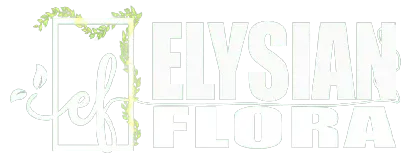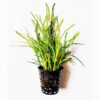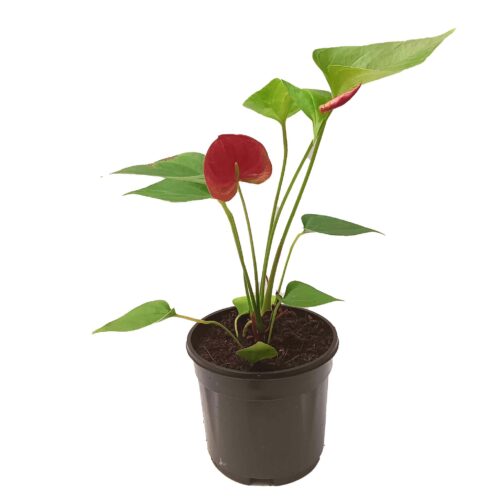There aren’t many ferns that are as well suited to life in a container as the Hemionitis arifolia (Heart leaf fern). The shade-loving, humidity-loving plant is more commonly used as a houseplant. As many hobbyists have discovered over time, this fern reveals its full potential when placed in terrariums and fairy gardens. This article will demonstrate how to properly care for this plant as well as information about its origin. When compared to other ferns, the heart leaf fern can be more difficult to work with. Hopefully, this guide will help you successfully maintain and propagate this unique flora. The name ‘Heartleaf fern’ comes from the plant’s glossy dark green fronds, which are heart-shaped. The plant was first scientifically recorded in 1859 in South East Asia, primarily in Laos, Sri Lanka, and Vietnam. Heart ferns are unlike almost any other type of fern, and its miniature size, dark green leaves, and even darker green stem make it easy to identify (which is almost black in colour). The leaves have a leathery feel to them. Hemionitis arifolia is an epiphyte, which means it grows on top of other plants and trees in nature. It should be noted that, while this fern can grow without a substrate such as soil, it is not a parasite. This dwarf fern grows to a height of 6 to 10 inches and is simply adorable. The tongue fern can and will thrive in your home if properly cared for. It should be noted, however, that this fern, like many other fern varieties, can be difficult to please and is not a plant for beginners.
Hemionitis arifolia (Heart leaf fern) Information
Because of the distinctive appearance of its fronds, Hemionitis Arifolia is also known as Heart Leaf Fern and, in some cases, Tongue Fern. This type of plant, like most ferns, thrives in tropical environments with moderate humidity and plenty of shade. Heart leaf fern, on the other hand, is a bit more delicate and requires a little more care.
Description
When compared to other ferns, the heart fern is easily distinguished. In fact, it bears no resemblance to a typical fern at all. Every aspect of it, from the sprouting stem base to the formation of the fronds, is very unusual and can frequently lead to plant mismanagement due to incorrect identification of its species.
For starters, the leaves are a dark green frond shaped like a heart or a tongue… The common names are hinted at. They typically grow to be 2 to 3 inches long when fully grown. If you rubbed your fingers across the surface of the leaves, the texture would be similar to that of leather.
The stems from which the leaves branch are dark brown, almost black in colour, and have a very narrow, stringy appearance. Small white hairs growing from this part of the plant lend a velvety texture to the firm, wire-like stems. The stems will grow to a maximum length of 3 to 5 inches, allowing this dwarf fern to reach a total height of 6 to 10 inches.
Habitat
Heart fern is native to Southeast Asia. The habitat consists of dense tree foliage in a moist, humid environment. The tropical environment in which this fern grows is bright from indirect sunlight and has plenty of shade. Hemionitis Arifolia is frequently found growing on damp forest floors or along the trunks of moss-covered trees. Depending on the time of year, temperatures will range from the low 60s to the mid-80s.
Preference for PH
Heart fern prefers to be closer to the acidic side of potential hydrogen. This plant is frequently found in the wild on very acidic soil or on tree trunks with highly acidic bark. The ideal PH range is 5.0 to 6.5, but this heart leaf plant can tolerate levels closer to 7.0 for a short period of time.
Type of Vivarium
This fern is ideal for a variety of vivariums. When deciding whether or not to use Hemionitis Arifolia in a specific type of enclosure, choose setups with ample land area. This plant will not tolerate saturated soils or primarily aquatic environments. Heart leaf fern will thrive in the following vivariums:Paludariums are enclosures that are half aquatic and half land-based.Terrariums are completely land-based enclosures with few to no aquatic features.
Vivarium Positioning
As I previously stated, this fern requires a large enclosure with plenty of space. When deciding where to place this plant in a terrarium, look for areas that are well-lit and have well-drained soil. This fern looks great in the foreground of an enclosure as centrepiece foliage. If the background wall is covered in organic matter, such as bark or moss, pin the plant directly to the wall for added visual interest. If the surface is well hydrated, it will work well on walls.
Substrate
When it comes to growing conditions, heart fern is a fairly adaptable plant. Because it is an epiphyte, it can grow not only in good soil but also on surfaces with no substrate. Hemionitis Arifoli absorbs nutrients from the air, falling water, and debris with which it comes into contact. Understanding how this plant’s rooting system works is critical to properly managing this plant.If planting this fern in the ground, choose a loose mixture of low-PH substrate. Sand and coco fibre combined will be light enough for roots to easily stretch through. Adding peat moss to the top layers or mix will also help with moisture. The substrate should never be completely saturated in water and should always be well-drained.Above ground, tied to wood or stone, is another popular placement for this fern. Heart leaf fern thrives in this habitat in the wild. For moisture, a layer of moss between the plant and the surface is recommended but not required. Adding a fogger or misting system to the enclosure is a powerful way to keep moisture in these higher areas. This will make it easier for the epiphyte to hydrate and receive nutrients on a consistent basis.
Lighting
The tropical climate Hemionitis Arifoli is a native plant that provides shade and indirect sunlight. When exposed to direct sunlight, this plant will quickly dry out and die. Because the plant is indoors, a high level of brightness would be ideal when setting up lighting within the vivarium for this fern. The tank should be kept away from windows and away from any UV-producing artificial light. Choose cooler-colored lights that resemble a cloudy day or a shaded forest, such as LEDs!
Plant Varieties and Related Plants
While the shape of Hemionitis arifolia resembles Anthurium andraeanum and Philodendron gloriosum, the Heart Leaf is a distinct fern in its own right.Many other types of ferns thrive in terrariums; for more ideas, see our guide to closed terrarium plants.
Common Issues
Take extra precautions to keep pests out of the terrarium where you keep your Heart Leaf Fern. They are especially vulnerable to a variety of pests, including scale, mealybugs, and aphids.Although the traditional hot water and neem oil treatment is organic, an infestation can still be devastating to a Hemionitis arifolia.









Reviews
There are no reviews yet.